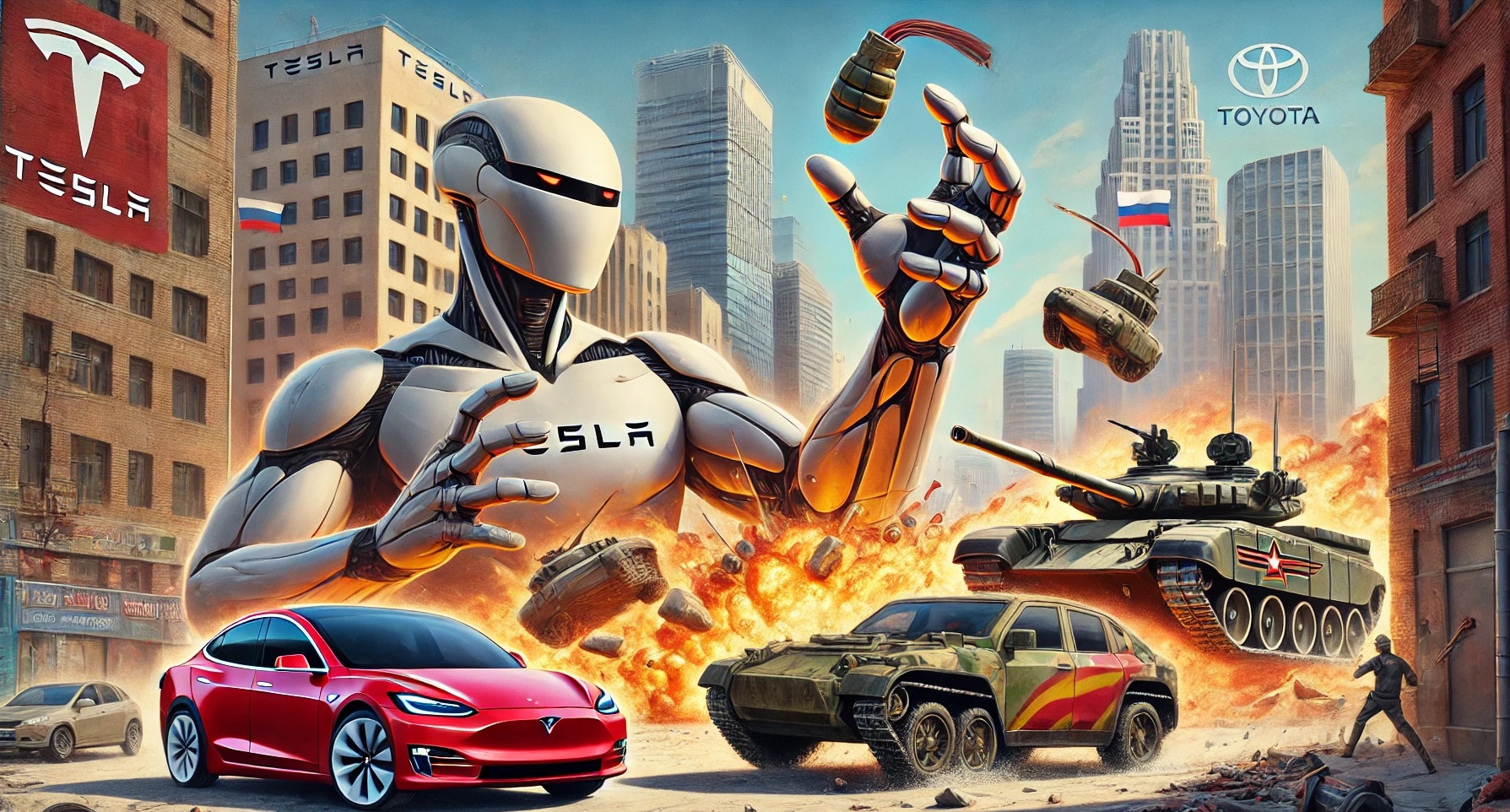In Vovchansk, Kharkiv Oblast, Ukrainian forces have showcased remarkable ingenuity in warfare. Facing delays in Western arms supplies, specifically aerial bombs, they devised an innovative solution: a ground drone carrying a homemade 200 kg hydrogen bomb.
This makeshift weapon targeted Russian-occupied ruins of the Aggregate Plant, successfully liberating part of the complex and denying enemies advantageous elevated positions. The operation's effectiveness suggests it may soon feature in military textbooks.
The Ukrainian project Deep State released footage in late July, attributing the action to the Khorne Group of the 116th Mechanized Brigade. The American Institute for the Study of War (ISW) noted the event, underscoring its significance.
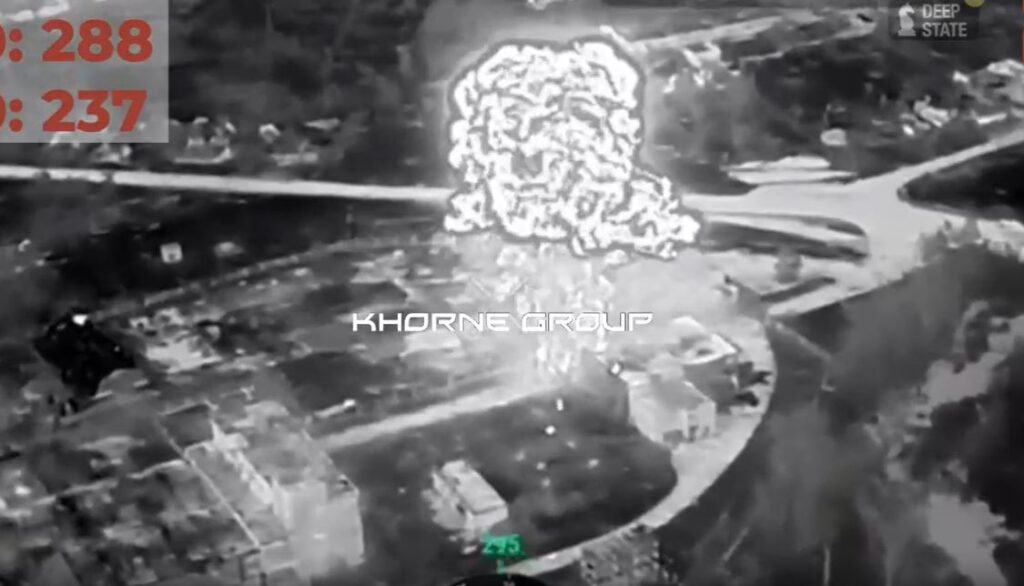
Intriguingly, analysis by the Reporting from Ukraine YouTube channel suggests the bomb utilized a Toyota Mirai hydrogen tank, while the ground drone incorporated Tesla components. This creative repurposing of civilian electric vehicle technology for military use highlights Ukrainian forces' adaptability under pressure.
Euromaidan Press has sought verification from soldiers, engineers, and military experts, exploring the broader implications of this technological adaptation in modern warfare.
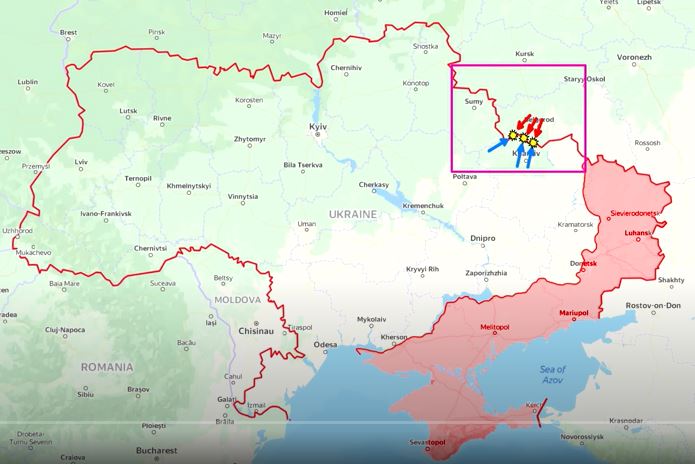
What happened in Vovchansk?
The Aggregate Plant in Vovchansk provided Russian forces with a strategic position overlooking the town and controlling the Vovcha river bridges. Despite this strong defensive setup, Ukrainian forces identified key vulnerabilities they could exploit.
However, Ukrainian options were severely limited. Guided bomb strikes on the plant by the Ukrainian Air Force were no longer possible due to a shortage of foreign military aid. Regular aerial drones also had limited effectiveness due to their small explosive charges. These constraints forced Ukrainian fighters to seek unconventional solutions.
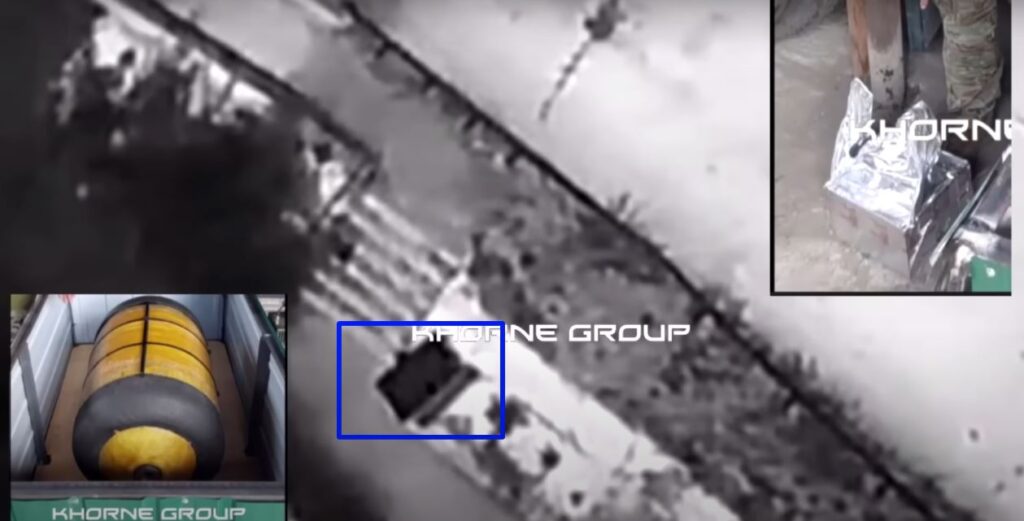
Facing these challenges, Ukrainian forces devised an innovative plan. They repurposed parts from wrecked civilian electric cars, including Teslas, to maintain their drone force. A groundbreaking bomb was constructed using a hydrogen canister from a Toyota Mirai, weighing over 200 kilograms. Reporting from Ukraine compared video footage of the homemade hydrogen bomb to a Toyota Mirai tank, noting their identical appearance.
To bypass electronic warfare defenses, a remotely operated ground drone transported the bomb across a partially destroyed bridge on Metalista Street, approaching the Aggregate Plant undetected. The resulting explosion caused significant damage, with the hydrogen composition generating powerful blast waves, fireballs, and debris.

"The hydrogen composition of the bomb enabled it to generate powerful blast waves, fireballs, debris, and mushroom clouds," Reporting from Ukraine assessed.
A subsequent fire suggested the Russians may have been storing ammunition nearby, intensifying the explosion.
This strike forced Russian troops to abandon their position, allowing Ukrainian forces to advance along Soborna Street and link up with troops from Haharina and Shevchenko Streets, effectively isolating the Russian stronghold.
The operation catalyzed a broader campaign to retake Vovchansk. In recognition of this success, President Zelenskyy visited the area to award distinguished Ukrainian fighters with state honors.
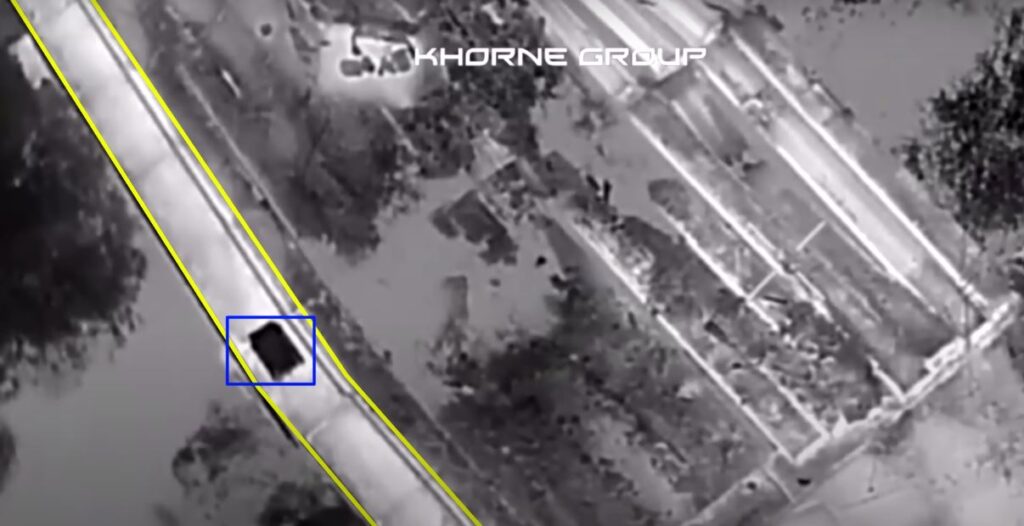
Ukrainian drone unit confirms use of Toyota Mirai tank and Tesla parts
Euromaidan Press sought to verify reports of innovative tactics used in Vovchansk by contacting the Khorne Group, a drone strike unit within the 116th Mechanized Brigade of the Ukrainian Armed Forces. The unit, reportedly responsible for the Vovchansk attack, confirmed key details of the operation.
The Khorne Group validated earlier claims about creating a hydrogen bomb from a Toyota Mirai tank.
"We used what volunteers donated to us," a unit spokesperson explained, highlighting the critical role of civilian support in Ukraine's defense efforts.
When questioned about using electric vehicle parts, such as those from Tesla, the unit expressed surprise at the inquiry's novelty. They clarified that this practice has been standard for some time, citing its cost-effectiveness. Even though Teslas or Toyotas are expensive, using their parts is cheaper than buying other equipment or weapons, the spokesperson noted.
https://twitter.com/Deepstate_UA/status/1817640662365503883?ref_src=twsrc%5Etfw%7Ctwcamp%5Etweetembed%7Ctwterm%5E1817640662365503883%7Ctwgr%5E259127f957f7ad6353db12b29516a49840f408e7%7Ctwcon%5Es1_&ref_url=https%3A%2F%2Feuromaidanpress.com%2F2024%2F08%2F03%2Ffrontline-report-ukrainian-forces-use-salvaged-hydrogen-fuel-cell-to-decimate-russian-position-in-vovchansk%2F
Furthermore, the unit revealed that the use of electric vehicle parts extends beyond their own operations.
"For over 18 months now, various drone manufacturers have been utilizing battery cells salvaged from damaged Teslas and other electric vehicles," the spokesperson elaborated.
The mechanics of Ukraine's Toyota-powered explosive and Tesla-powered drone
Trent Telenko, a retired US DoD Civil Servant, provided Euromaidan Press with valuable insights into the innovative explosive device used by Ukrainian forces in Vovchansk. Нe confirmed that the hydrogen-powered Toyota fuel tank could be used this way.
Telenko also explained that military explosive charges are built in stages, starting with a fuse containing a chain of small, volatile explosives. This leads to a larger, less sensitive charge in the fuse, which then detonates the main explosive charge. Modern military explosives often incorporate secondary fuel, such as powdered aluminum, to enhance the blast and flame effects within the confined space of a shell or bomb.
In this context, the Ukrainian forces' use of a Toyota Mirai's hydrogen tank represents a significant innovation. Telenko noted that this adaptation introduces a more energetic secondary fuel, which is particularly effective in a ground drone. While such drones face volume constraints, they can handle substantial mass, making the hydrogen tank an ideal component for amplifying explosive power.
However, Telenko also highlighted the broader implications of this development.
"The implications of the Toyota hydrogen tank vehicle-borne improvised explosive device (VBIED) are straightforward - expect bigger car bombs," he warned.
The expert expressed concern that this innovation might be replicated by other groups, including non-state actors.
"What one group of people can do, another will do because it was shown to be possible. Sub-nation state actors will copy the idea of what the Armed Forces of Ukraine (AFU) did, even if they don't know the exact method AFU devised," the expert explained.
Trent Telenko provided further insights into the use of Tesla components in the Ukrainian forces ground drone operation.
"The extent of 'Tesla components' used in the AFU ground-drone remains unclear," Telenko explained. "It could range from a few electronic parts to nearly an entire vehicle chassis with the Toyota hydrogen tank bomb mounted on top."
Speculating on the specific use of Tesla technology, Telenko suggested, "My guess is that the Tesla self-drive system electronics and associated cameras were adapted as the ground-drone control system. This adaptation likely helped overcome Russian jamming and radio line-of-sight issues."
Telenko also highlighted the potential for AI integration in the operation.
"The AFU certainly had enough drone video footage of the approaches to train a Tesla AI self-driving system to navigate the route to the Aggregate plant," he noted.
Dual-use dilemma: When consumer tech turns combat
The military unit sees no issue in repurposing civilian tech for combat, embracing the concept of dual-use goods.
“We're comfortable with our actions,” soldiers told Euromaidan Press.
Ukrainian defense experts are split on this practice. Mykola Bielieskov, a research fellow at the National Institute for Strategic Studies, argues that no international treaties signed by Ukraine prohibit it. Indeed, Ukrainian forces have long been converting civilian drones for military use. However, Ivan Kyrychevskyi, another defense expert, cautions that widespread adoption doesn't necessarily make it acceptable.
“Has the drone-supplying country endorsed this use?” Kyrychevskyi questioned in an interview with Euromaidan Press.
Euromaidan Press sought comments from Toyota and Tesla, but received no response by publication time.
Read more:
- Frontline report: Ukrainian Forces use salvaged hydrogen fuel cell to decimate Russian position in Vovchansk
- Frontline report: Ukraine gains more territory in Kursk in 3 Days than Russia in 3 months in Kharkiv
- Frontline report: Ukraine repels amphibious-style Russian attack in fierce Chasiv Yar battle

